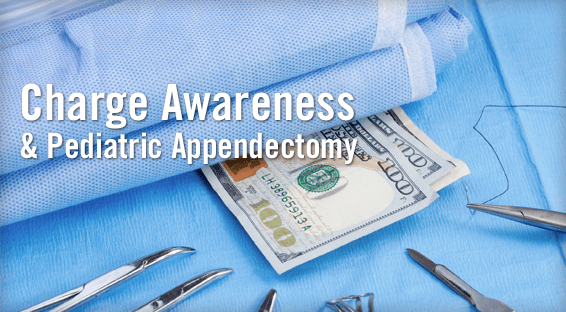Consumers can typically compare prices before making purchases for most industries in the United States, but the same is not necessarily true in healthcare, a sector of the economy that accounts for more than 17% percent of the U.S. Gross Domestic Product. “Patients seldom know what they’ll need to pay for many procedures, giving them no real basis to compare costs,” says Eric R. Scaife, MD. “One such example is uncomplicated cases of pediatric appendicitis, which can be treated with open or laparoscopic techniques. These procedures are equally effective and have similar outcomes, but laparoscopy is considerably more expensive. Unfortunately, few patients are aware of the costs of these surgeries.”
In a study published in Annals of Surgery, Dr. Scaife and colleagues assessed whether charge awareness affected patient decisions in 100 children with suspected acute, uncomplicated appendicitis. The cohort was split into two groups, the first of which included 49 children and parents who received pricing information and were informed that open surgery costs were considerably higher than laparoscopy. These individuals were then asked to choose between an open and laparoscopic procedure. The remaining 51 patients were not shown cost information before being asked to choose their surgery.
Cost Impacts Choices
After surgery, surveys of patients and parents showed that those receiving pricing information chose open surgery 1.8 times more often than those who were unaware of the cost differences (63% vs 35%). Length of hospital stay and time in the operating room were comparable for each type of surgery, but the median total hospital charges were $1,554 less for those who underwent open appendectomy. Median total hospital charges were also $528 less for the group exposed to charge information, regardless of the surgery the selected.
Consumer Involvement
The study also found that 90% of respondents reported that they valued having input in their surgical decision, and 31% stated that price was the primary influence on their choice of procedure. “Our research demonstrates that when consumers have the information, they want to be involved in healthcare decisions,” Dr. Scaife says. “It also shows that cost can influence what they choose when procedures are equally effective and have similar outcomes. Cost awareness changes consumer behaviors.”
A discussion of treatment options that includes charge information may represent an unrealized opportunity to affect change in healthcare spending. “Providing pricing information upfront can influence patient decisions and may potentially lead to cost savings in healthcare,” says Dr. Scaife. “At the same time, however, it’s important for healthcare providers to become more aware of costs so that they can share this information with their patients before decisions are made.”



 Janine Anthes
Janine Anthes